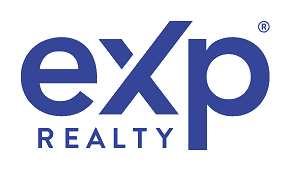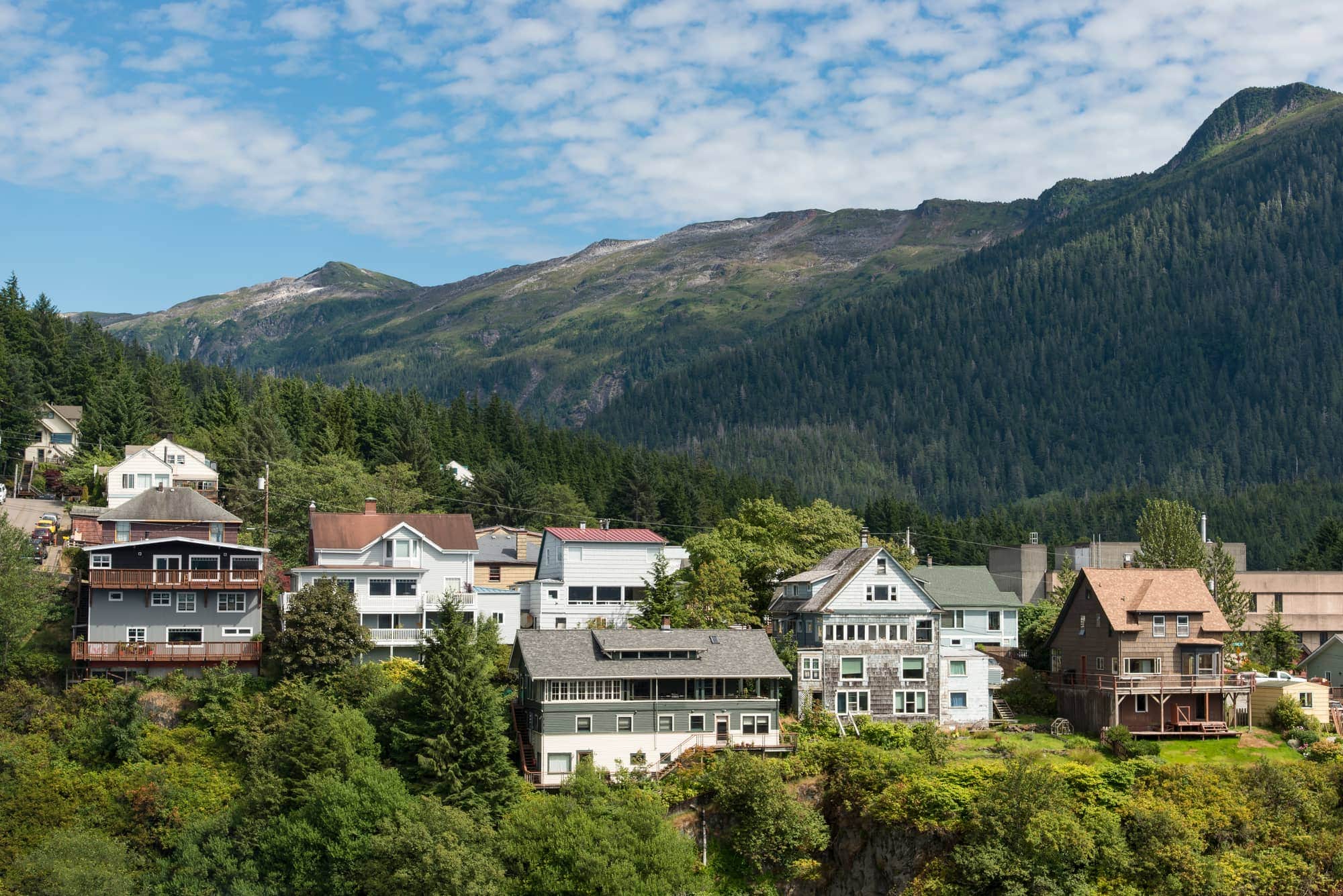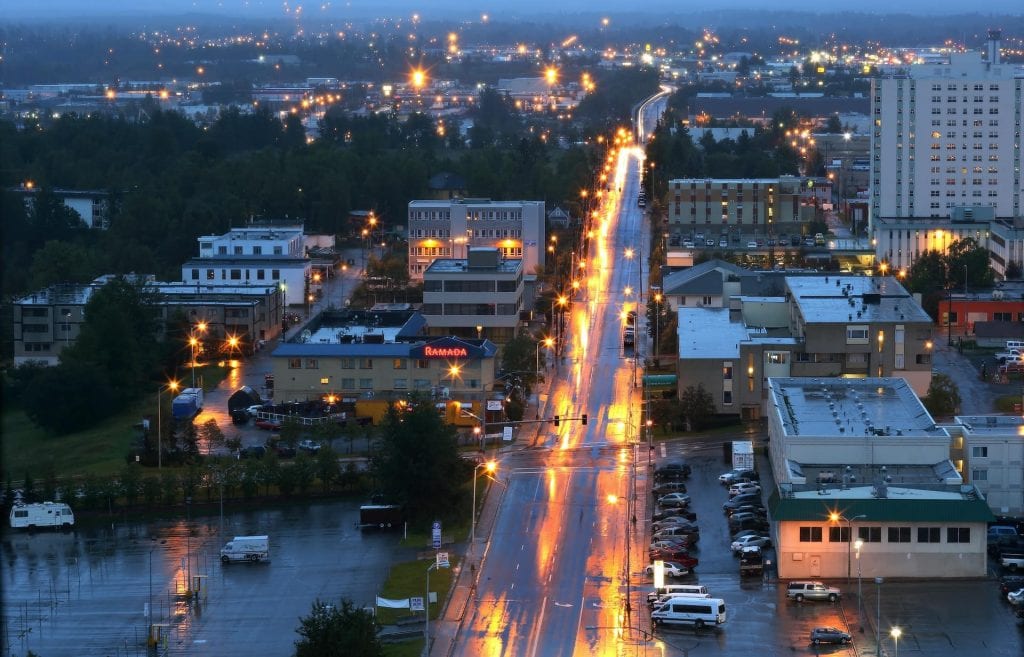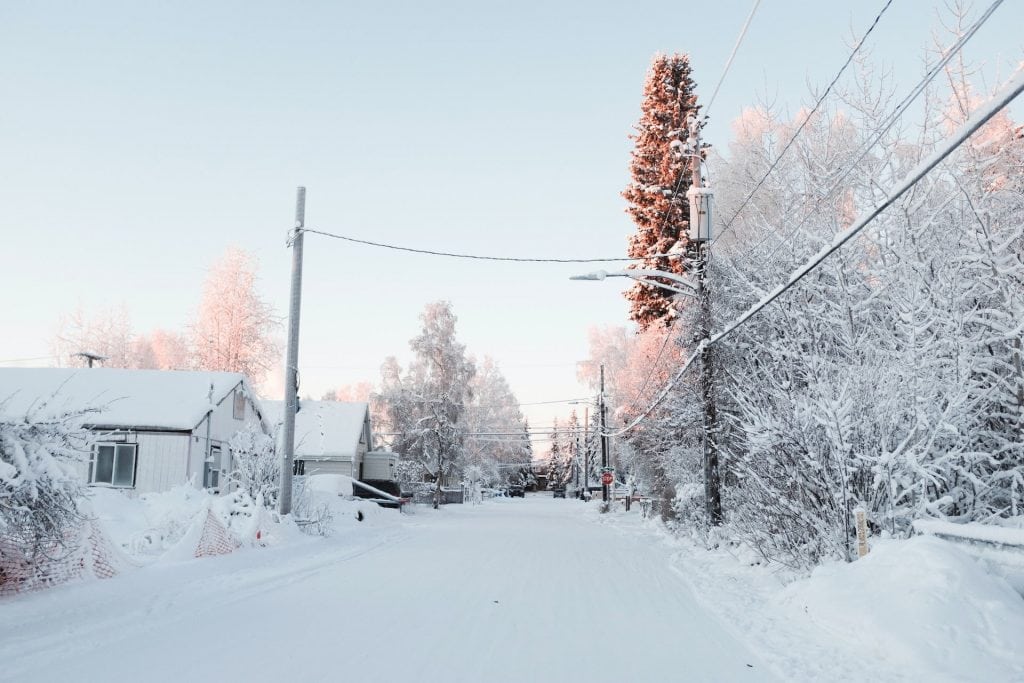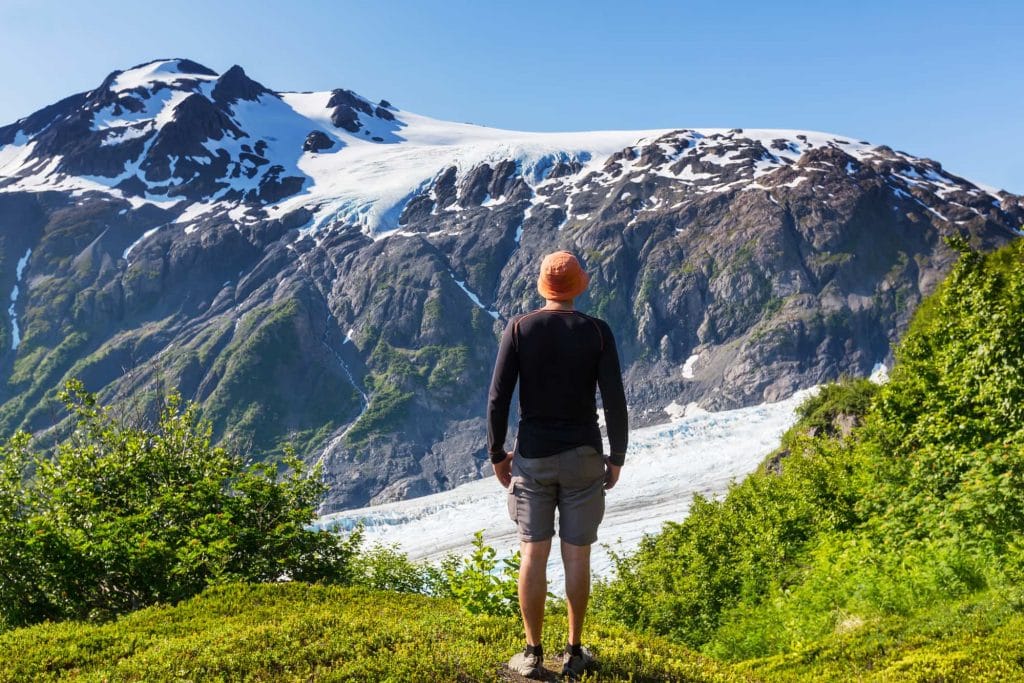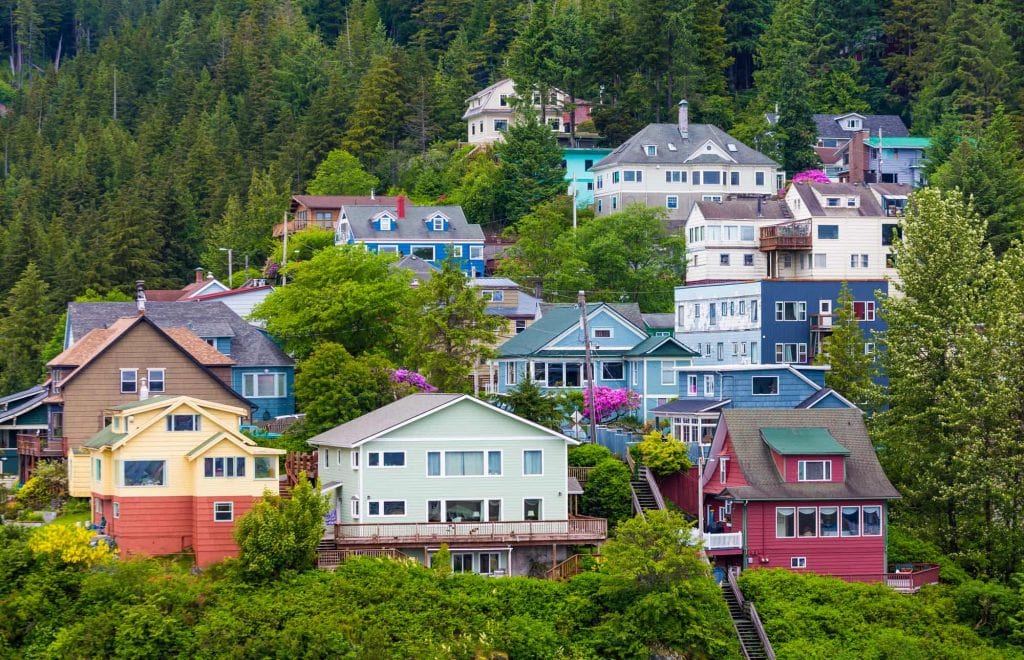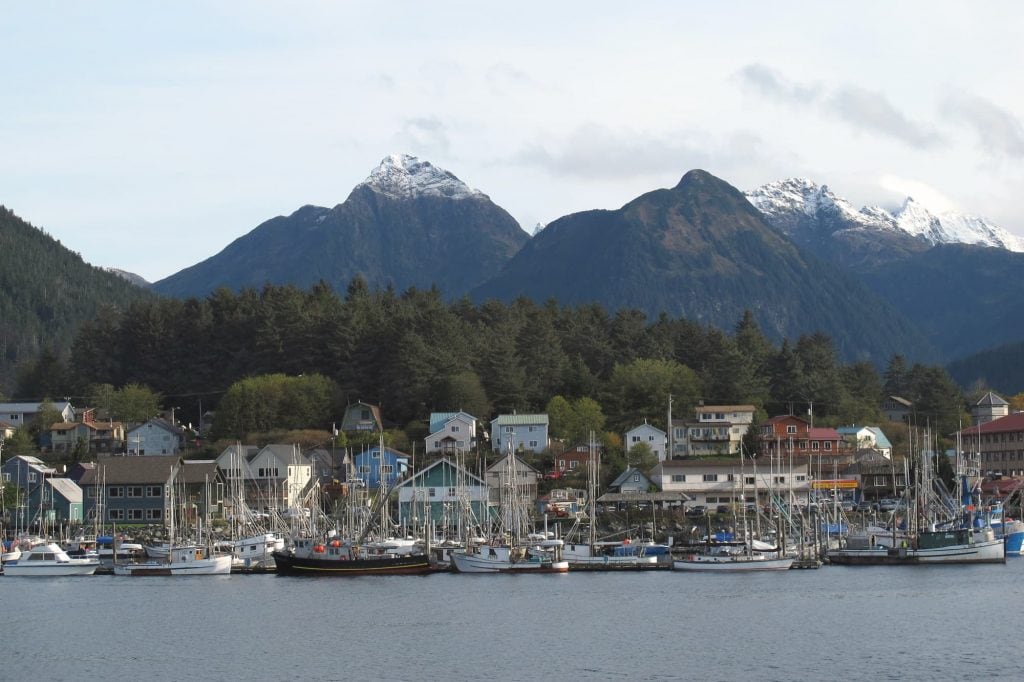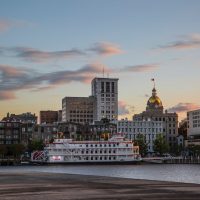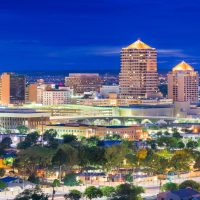Moving to a state as diverse and vast as Alaska is a significant decision. As you ponder immersing yourself in the stunning Alaskan wilderness, you’ll find many cities and towns with unique charm and lifestyles to consider as your potential new home.
However, pinpointing the best place to settle down can be challenging with the plethora of options available, each promising a unique living experience. In this guide, we’ve compiled a list of the best places to live in Alaska to help you navigate the vast options and find your dream home.
The Best Places To Live in Alaska
Embraced by breathtaking natural wonders and a unique way of life, Alaska has long been an alluring destination for adventurers and those seeking a close-knit community. If you plan on moving to Alaska, the following ten cities are some of the best places to live in the Last Frontier.
Anchorage
Population: Approx. 287,000
Median household income: $88,871
Median Home Price: $334K
Anchorage, Alaska’s largest city, offers a blend of urban and natural views, with options ranging from charming suburban homes to contemporary downtown condos across several well-established neighborhoods, providing a perfect combo for nature lovers and city dwellers.
Anchorage is located in southcentral Alaska and nestled between the Chugach State Park and the Cook Inlet, offering stunning views and ample opportunities for outdoor activities. It is part of the Municipality of Anchorage.
Anchorage is known for its cold winters and midnight sun during summer, offering residents unique experiences like the Iditarod Trail Sled Dog Race. Real estate in Anchorage also caters to diverse residents, from young families to retirees, with quality public and private school options and a University of Alaska satellite campus.
In terms of amenities, residents enjoy various restaurants, shopping centers, and art galleries. The city’s major industries include the oil, gas, and air cargo shipping industries, providing various job opportunities.
Moreover, the city boasts a rich cultural landscape with various museums, festivals, and a vibrant music scene featuring the Anchorage Symphony Orchestra and the Alaska Native Heritage Center.
Fairbanks
Population: Approx. 32,000
Median household income: $66,572
Median Home Price: $227K
As the state’s second-largest city, Fairbanks provides a classic Alaskan experience, offering real estate options from cozy log cabins with stunning views of the Northern Lights to modern apartments and single-family homes.
Known for its harsh winters and warm summers, the city is a haven for outdoor enthusiasts. It offers a variety of fun activities, such as hiking trails in the nearby wilderness and bike rides under the midnight sun.
The city is also home to the main campus of the University of Alaska, offering great education opportunities. The median income is lower than the national median, but residents enjoy affordable rents and a low sales tax. Major industries in Fairbanks include government jobs, healthcare, military, and education.
Residents in Fairbanks real estate are treated to a rich cultural scene, with numerous art galleries, theaters, and historical museums that pay homage to the city’s gold rush past. The Fairbanks Summer Arts Festival also draws artists and enthusiasts for creative workshops and performances, adding to the city’s vibrant cultural calendar.
Homer
Population: Approx. 5,800
Median household income: $63,854
Median Home Price: $283K
Nestled along the scenic Kachemak Bay on the southern tip of the Kenai Peninsula, Homer is a picturesque coastal town that captivates visitors and residents with its stunning natural beauty. Real estate here ranges from charming waterfront cottages and log cabins to contemporary homes with breathtaking views of the bay and surrounding mountains.
Known as the “Halibut Fishing Capital of the World,” Homer has a vibrant fishing scene and stunning views of Kachemak Bay. The city provides a relaxed lifestyle with numerous outdoor activities, making it an attractive option for families and retirees.
Homer’s economy primarily depends on tourism, fishing, and seasonal industries. The city also boasts quality education facilities, both public and private, contributing to its appeal to families. Local galleries, studios, and workshops showcase the talents of the many artists who call Homer home, and the annual Homer Art Walk draws art enthusiasts from across the region.
Juneau
Population: Approx. 31,700
Median household income: $90,126
Median Home Price: $341K
Juneau, Alaska’s capital city, is located amid the towering mountains and picturesque channels of Southeast Alaska’s Inside Passage. With no road access to the rest of the state, it offers a uniquely secluded lifestyle surrounded by the Tongass National Forest and the Gastineau Channel.
It boasts real estate offerings ranging from charming historic homes to modern waterfront properties with sweeping ocean views and mountains. Residents enjoy various activities like bird watching at the Mendenhall Glacier, hiking, and exploring cultural sites. With a median income higher than the national average, it’s an attractive place for professionals and families.
The city offers ample job opportunities in government, tourism, fishing, and mining sectors. Young families are drawn to Juneau for its excellent schools, abundant real estate options across a variety of safe neighborhoods, and plentiful opportunities for outdoor activities.
Juneau also serves as the gateway to the magnificent Glacier Bay National Park and Tracy Arm Fjord, which offers awe-inspiring glacier views.
Kenai
Population: Approx. 7,600
Median household income: $70,732
Median Home Price: $214.6K
Kenai, located on the Kenai Peninsula’s western shore, is known for its scenic landscapes, including Kenai Fjords National Park and Kenai River. With its strategic location in southcentral Alaska, the diverse Kenai real estate landscape offers everything, from cozy cabins and quaint waterfront homes to spacious properties with breathtaking views.
The city attracts a variety of demographics, including young families enticed by the excellent schools and ample recreational opportunities, as well as retirees seeking a peaceful place to enjoy their golden years surrounded by natural wonders.
The city’s primary industries are oil and gas, offering job opportunities for professionals. It also has a thriving fishing industry, making it ideal for fishing enthusiasts. Additionally, Kenai is home to the largest sockeye salmon fishery in the world, attracting fishermen from around the globe.
Ketchikan
Population: Approx. 8,050
Median household income: $68,125
Median Home Price: $227K
Ketchikan, situated in southeastern Alaska, is the state’s southernmost city. Known for its charming waterfront and vibrant arts scene, it offers properties from charming historic houses to contemporary waterfront homes with breathtaking views of the Inside Passage.
This city is home to many young families, professionals, and retirees. Ketchikan residents enjoy various outdoor activities, from hiking in Misty Fjords National Monument to fishing in the Tongass National Forest. It also boasts modern amenities, including hospitals like the PeaceHealth Ketchikan Medical Center, which serves the community’s medical needs.
The city also has a rich history visible in its well-preserved totem poles found around the city and at the Totem Heritage Center. Its economy is primarily based on tourism, fishing, and healthcare.
Kodiak
Population: Approx. 5,400
Median income: $67,391
Median Home Price: $275K
Kodiak is located on Kodiak Island and is renowned for its stunning views and epic wildlife, making it a paradise for nature lovers. It offers a diverse real estate market, from charming waterfront homes to cozy cabins amidst the island’s lush landscapes.
The city offers various activities, from bird watching to exploring the Fort Abercrombie State Historical Park. Kodiak is also home to the Kodiak Brown Bear Center, where visitors can observe these magnificent animals in their natural habitat.
The city’s major employers include seafood processing plants, government agencies, and various small businesses catering to tourism and services. The city caters to all residents, from young professionals to families, with quality education facilities and healthcare services.
Sitka
Population: Approx. 8,400
Median income: $82,083
Median Home Price: $392K
Sitka on Baranof Island offers a unique blend of Alaskan wilderness and rich history. Real estate options here range from historic homes that reflect the city’s Russian heritage to modern waterfront properties.
The city appeals to a diverse crowd of young professionals, families, and retirees with its blend of historic charm and natural beauty. With its mix of Tlingit culture and Russian history, Sitka has a variety of cultural sites, including Orthodox churches.
Its economy revolves around fishing, tourism, and government, with major employers including the Alaska Native Brotherhood, Sitka School District, and the Southeast Alaska Regional Health Consortium.
Talkeetna
Population: Approx. 870
Median income: $56,607
Median Home Price: $183.7K
Talkeetna, located in the Matanuska-Susitna Borough, offers a small-town charm with a population under 1,000. Known for its panoramic views of Denali, it’s a favorite amongst outdoor enthusiasts and nature lovers with its cozy cabins and rustic lodges.
While Talkeetna’s economy has traditionally relied on trapping, mining, and timber, the tourism industry now plays a significant role, offering opportunities for employment in lodges, guiding services, and recreational activities.
Talkeetna is also the base for numerous Denali expeditions, making it a bustling hub during the climbing season. While medical facilities are limited in town, Mat-Su Regional Medical Center in nearby Palmer serves the region’s healthcare needs.
Wasilla
Population: Approx. 9,700
Median income: $62,292
Median Home Price: $245K
Wasilla, one of the most populated cities in the Matanuska-Susitna Valley, is fast-growing. It offers a blend of urban life and outdoor adventure, with options ranging from spacious single-family homes with large yards to modern townhouses and condos.
Wasilla real estate residents enjoy various outdoor activities with Lucile Lake and the nearby Chugach and Talkeetna Mountains. It’s also home to the Iditarod Trail Sled Dog Race headquarters, one of Alaska’s most renowned sporting events.
The economy is driven by retail, healthcare, and construction, and it has a variety of educational institutions, making it an attractive location for families.
FAQs: Best Places to Live in Alaska
Now that we’ve explored the ten best cities to live in Alaska, you might still have some questions. We’ve compiled a list of frequently asked questions to ensure you’re fully informed.
What town has the best weather in Alaska?
Juneau, the state’s capital, typically has the most balanced weather with milder winters compared to the interior of Alaska.
What city do most Alaskans live in?
Anchorage is Alaska’s most populated city, housing over 40% of the state’s population.
Is it expensive to live in Alaska?
The cost of living in Alaska is higher than the national average, primarily due to the high cost of goods and transportation.
Is it a good idea to live in Alaska?
Living in Alaska can be great if you enjoy nature, outdoor activities, and slow-paced life. However, be prepared for cold winters and higher living costs.
What part of Alaska is cold all year round?
The northern part of Alaska, particularly cities like Barrow and Fairbanks, experiences cold temperatures almost all year round.
What is the warmest part of the year in Alaska?
Alaska’s warmest part of the year is typically from June to August.
What is the most difficult place to live in Alaska?
The most difficult places to live are often remote areas due to harsh weather conditions and limited access to amenities, particularly areas above the Arctic Circle.
What’s the cheapest place to live in Alaska?
Kenai and King Cove are considered some Alaskan cities to have a lower cost of living than others.
How much is a gallon of milk in Alaska?
A gallon of milk in Alaska can range from $4 to $6, depending on the location.
What is a livable salary in Alaska?
A livable salary in Alaska depends on your lifestyle and location, but on average, a yearly salary of $75,000 is considered comfortable.
Considering the high cost of living, you might need to earn more to maintain a comfortable lifestyle in Alaska than in other states. It’s advisable to have a detailed financial plan before moving.
What are the best months to live in Alaska?
If you love the beauty of snowfall, the winter months of December through February would be ideal. On the other hand, if you prefer long days and mild temperatures, the summer months from June through August would be perfect.
Final Thoughts
The best places to live in Alaska vary widely, depending on your preferences. From the largest city, Anchorage, to the charming town of Talkeetna, each location offers something unique.
Whether you’re a nature lover seeking stunning views and outdoor activities or you prefer a bustling city with cultural sites and job opportunities, Alaska has a city that can cater to your preferences.
Ready to take the next step in your Alaskan adventure? Contact a local real estate agent at eXp Realty to find the best properties for your needs. You can also attend open houses in your preferred Alaskan location if you live in or are planning to visit the state soon.
